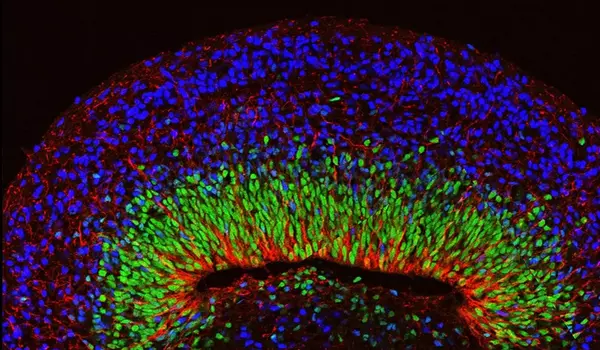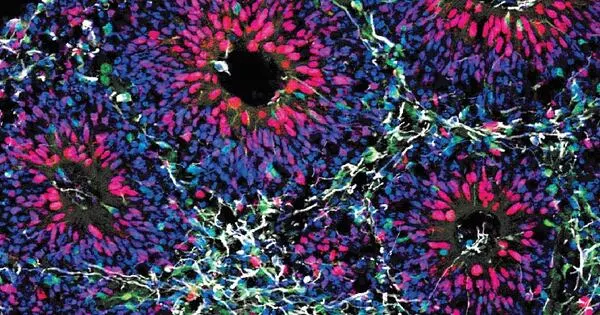Brain organoids, which are 3D cultures of brain cells that mimic the structure and function of the developing human brain, have been used to study the effects of prenatal alcohol exposure. These studies have shown that alcohol exposure during pregnancy can lead to a variety of structural and functional abnormalities in the developing brain, including reduced brain size, altered neural connections, and impaired cognitive function. Additionally, prenatal alcohol exposure has been linked to a higher risk of developing neurological disorders such as fetal alcohol spectrum disorders (FASD) and autism. These findings highlight the importance of avoiding alcohol consumption during pregnancy to protect the developing brain.
There is no amount of alcohol that is safe for a developing fetus. A new study shows how alcohol harms the growth and function of developing brain organoids at the molecular level. Alcohol consumption during pregnancy poses a significant risk to the unborn child’s healthy development. There is no known safe level of alcohol consumption during pregnancy.
The various diagnoses that emerge under the umbrella of fetal alcohol spectrum disorders reflect the consequences of prenatal alcohol exposure (PAE). Fetal alcohol syndrome (FAS) is defined at one end of the spectrum by growth deficits and physical differences, but in most cases, irreversible brain damage leads to behavioral and learning challenges even when there is no physical impact. Experts estimate that 1.1 to 5 percent of U.S. schoolchildren – as many as 1 in 20 – may be affected by PAE, with some percentage experiencing FAS.
Although the clinical effects of fetal alcohol spectrum disorders are well documented, the precise molecular effects on the human fetal cerebral cortex are not fully understood. In a new study, published November 16, 2022 in Molecular Psychiatry, researchers at University of California San Diego School of Medicine used human brain organoids to more specifically document how alcohol exposure impairs the development and functioning of new brain cells.
The findings underscore the broad threat of alcohol exposure to the fetal brain. The harm inflicted is profound and extensive.
Alysson R. Muotri
“The findings underscore the broad threat of alcohol exposure to the fetal brain. The harm inflicted is profound and extensive,” said Alysson R. Muotri, Ph.D., professor in the Departments of Pediatrics and Cellular and Molecular Medicine at UC San Diego School of Medicine.
Muotri is co-corresponding author of the study with Cleber A. Trujillo, a former project scientist in Muotri’s lab and now associate director of stem cell biology at Massachusetts-based Vesalius Therapeutics.
Using human induced pluripotent stem cells, Muotri and colleagues created three-dimensional brain organoids that develop similarly to human fetal corticogenesis – the formation of the outer layers of the brain that house many high-level functions, such as reasoning, conscious thought, emotional control, and speech.

Alcohol exposure at various stages of fetal brain development resulted in a variety of negative effects, ranging from fundamental dysfunction of cellular processes to faulty brain architecture and insufficient creation of support cells (gliogenesis) and connections between brain cells (synaptogenesis).
The researchers then used electrophysiology recordings to monitor electrical activity patterns in the cortical organoids, documenting and confirming impaired cortical organoid function. The authors said the findings improve upon previous studies using animal models.
“They overcome non-human models’ suboptimal recapitulation,” said co-author Miguel Del Campo, MD, Ph.D., associate professor of medicine at UC San Diego and medical geneticist at Rady Children’s Hospital-San Diego. “In fact, they demonstrate that organoids are a valuable model for more fully and deeply assessing the effects of alcohol exposure on the developing human brain.”
Kenneth L. Jones, MD, co-author and professor of pediatrics at the University of California, San Diego School of Medicine, elaborated: “This is critical because we will be able to see which prominent growth and signaling pathways are disrupted and possibly discover new targets to inhibit or prevent the neuropathology of prenatal alcohol exposure. The good news is that some of these changes can be reversed with experimental drugs.”





